Last updated: June 9, 2025
Are Haflinger horses good for beginners?
Absolutely. Haflingers are among the best beginner-friendly horse breeds—calm, reliable, and easily recognized by their striking chestnut coats and flaxen manes. If you’re new to horses or looking for a steady, people-oriented partner, Haflingers are an outstanding choice. As an experienced horse owner, I’ve found them especially rewarding for riders of all ages and skill levels. In this guide, you’ll learn everything about the Haflinger breed—from their history and unique traits to care tips and beginner suitability.
Quick Navigation
- Haflinger Horse Breed Overview: The Golden Horse
- Why Haflingers Are Good for Beginners: Ideal First Horses
- Haflinger Performance & Versatility: Beyond Beginner Riding
- Haflinger Care & Management: Easy Keepers, Healthy Horses
- Buying a Haflinger Horse: Your Guide to Purchase
- Fun Facts & FAQs: Everything About Haflinger Horses
- Haflinger vs. Other Beginner Horse Breeds: A Comparison
- Conclusion: Why the Haflinger is Your Ideal First Horse
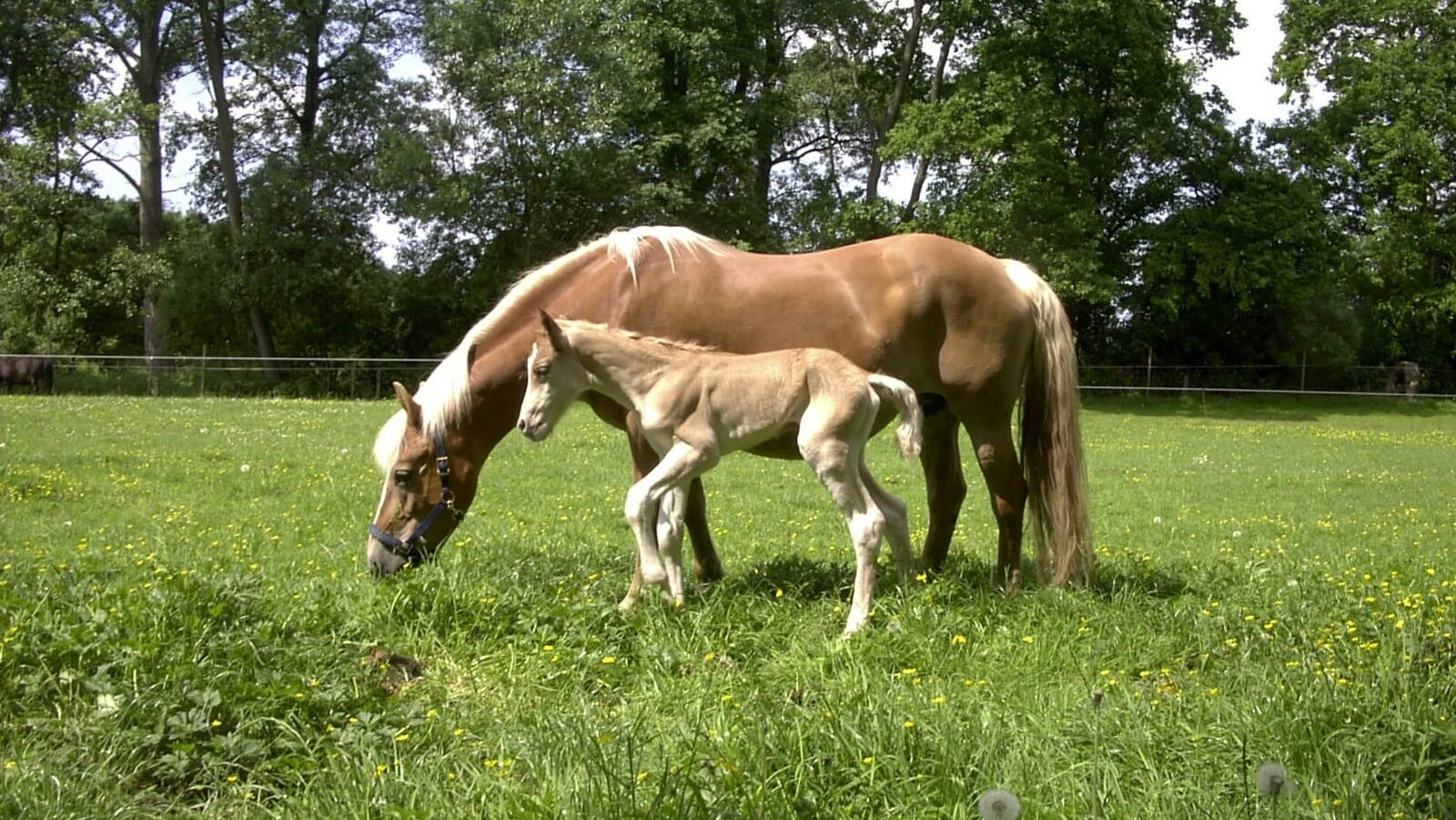
Haflinger Horse Breed Overview: The Golden Horse
Dive into the essential facts about Haflinger horses, from their fascinating beginnings in the Alps to their distinctive physical appearance.
Haflinger History and Origin
Originating in the rugged Tyrolean Alps of Austria and northern Italy, the Haflinger horse breed was developed in the late 19th century. Bred for versatility, they excelled at light draft work, riding, and driving across challenging mountainous terrain. They even earned the nickname “mountain tanks” during World War II for their incredible strength in alpine transport.
All modern Haflingers trace their lineage back to the foundation sire, Folie, born in 1874. The seven distinct stallion lines (A, B, M, N, S, St, W) underscore the breed’s purity today, as recognized by the American Haflinger Registry and the World Haflinger Federation. Their history also includes a notable scientific milestone, with a Haflinger mare becoming the first cloned horse in 2003.
Haflinger Physical Characteristics & Appearance
- Height: 13.2 to 15 hands (54–60 inches/137–152 cm)
- Weight: 800–1,300 lbs (360–590 kg)
- Build: Compact, robust, and exceptionally muscular. They possess a refined head, expressive eyes, a deep chest, strong back, and powerful hindquarters, all supported by clean legs and incredibly hardy hooves. This conformation makes them remarkably surefooted.
- Color: Always chestnut with a flaxen (blonde/white) mane and tail—a distinctive hallmark of the breed. While their appearance can sometimes resemble that of a palomino, Haflingers are not palomino; genetically, they do not carry the cream dilution gene responsible for palomino coloration, thereby ensuring their distinct breed purity. For more details, explore our comprehensive guide on Palomino Horses.
Beyond their charming looks and rich heritage, the Haflinger’s true appeal often lies in their temperament, making them ideal partners for novice riders.
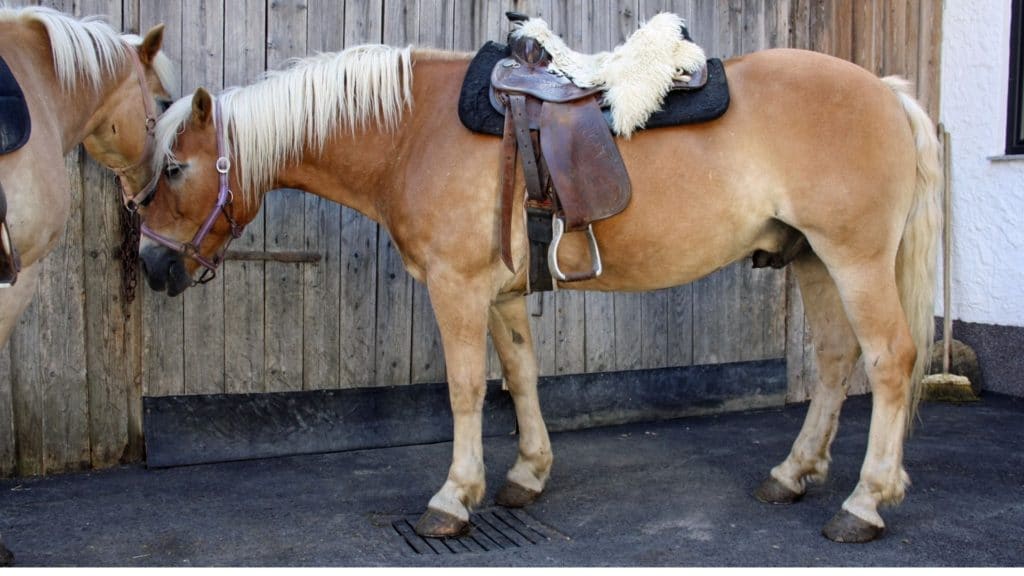
Why Haflingers Are Good for Beginners: Ideal First Horses
Haflingers stand out as an ideal breed for new riders, thanks to their exceptional temperament and ability to connect with people.
Haflinger Temperament: Gentle & Willing
Haflingers are celebrated for their exceptionally gentle, willing, and intelligent nature. They are remarkably easy to handle, eager to please, and form strong bonds with their owners. Their calm, unflappable demeanor makes them ideal for children and novice riders, often described as “bombproof” due to their steady temperament.
Real Haflinger Horse Owner Feedback
I’ve heard countless stories from Haflinger owners praising their reliability, affectionate nature, and forgiving disposition. My friend Kimberly, a close friend and fellow horse enthusiast, shares her own experience: “My Haflinger, Daisy, transformed my son’s confidence on the trails. She calmly navigated every obstacle, even with his inexperience, truly showcasing how gentle and safe these horses can be.” Often described as “people horses,” they thrive on attention and eagerly participate in family activities, forging strong bonds with their human companions.
Training Your Haflinger: 5 Tips for Beginners
Haflingers’ intelligence can lead to occasional boundary-testing, but consistent training makes them ideal for beginners. To ensure a responsive and willing partner, keep these tips in mind:
- Keep Sessions Short: Aim for 15–20-minute training sessions to maintain focus and prevent boredom.
- Positive Reinforcement: Employ treats, praise, and gentle encouragement to build trust and encourage desired behaviors.
- Consistent Commands: Use the same voice commands and body language consistently to prevent confusion.
- Start with Groundwork: Establish respect and clear communication through groundwork exercises before moving to ridden work.
- Seek Professional Guidance: Don’t hesitate to work with an experienced trainer for guidance, especially for novice riders.
Haflinger Suitability for Beginners: Expert Perspectives
While the general consensus celebrates the Haflinger’s suitability for beginners, it’s crucial to remember that every horse is an individual, and proper training and handling are always paramount.
Donna Kuck, a long-time breeder and seller of Haflingers at Cedar Lane Farm, offers a seasoned perspective:
“Many nice Haflingers can and do take excellent care of all types of beginner riders and handlers. They are in great demand as therapy horses and are solid and sound as well as easy keepers. They are confident horses generally, not as nervous as many breeds.”
Ms. Kuck emphasizes that while temperament is genetically based, social conditions and training significantly influence a horse’s behavior. She notes that Haflingers’ intelligence and social nature—qualities that make them wonderful companions and pets—can sometimes mean they might test boundaries with an inexperienced rider if not properly understood or trained. However, with consistent guidance and if youngsters bond with them on the ground, Haflingers can indeed be suitable for beginners.
Ultimately, a Haflinger’s true potential as a beginner’s horse shines with consistent, positive guidance. This expert insight reinforces that while the breed generally possesses beginner-friendly traits, individual temperament, consistent training, and appropriate handling are always the foundation for a successful partnership, especially for novice riders.
Their easy-going nature is just one reason Haflingers are so beloved; their impressive versatility in various disciplines further cements their status as excellent partners.
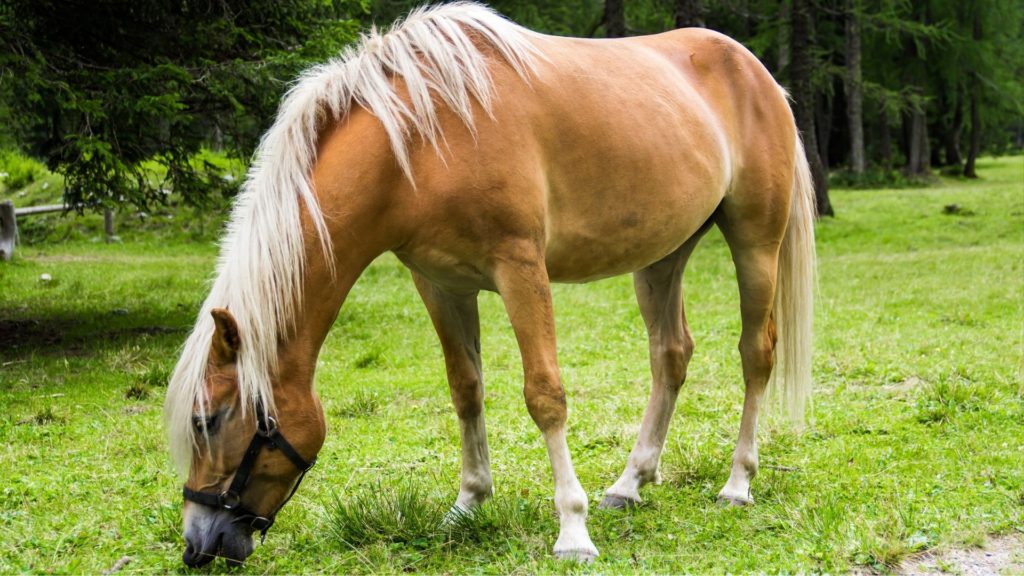
Haflinger Performance & Versatility: Beyond Beginner Riding
Haflingers adapt seamlessly to a wide range of disciplines, making them ideal partners for riders of all experience levels. Their versatility is one of their most celebrated traits.
Haflingers for Trail Riding
Their mountain heritage makes Haflingers exceptional, reliable partners for exploring challenging outdoor terrain. They are sure-footed and steady, providing confidence and safety for both beginners and experienced riders.
Haflingers for Driving Disciplines
Haflingers’ inherent strength, calm demeanor, and eagerness to please make them ideal for both recreational and competitive driving, from pleasure carts to combined driving. Their robust build and willingness to take on challenges are highly valued in driving circles. This versatility is especially evident in our region, where many of my friends use their Haflingers for popular trail riding with wagons, a task at which these horses truly excel.
Haflingers in Dressage
While not traditional dressage mounts, Haflingers display athletic gaits and a willingness to learn, making them suitable for lower-level dressage and schooling. Their rhythmic, ground-covering movement is a pleasure to ride.
Haflingers for Therapeutic & All-Ages Riding
Haflingers’ gentle temperament is ideal for therapeutic programs that aid individuals with special needs, as well as for riders of all ages. Their calm nature and steady disposition provide comfort and confidence to both children and adults. The American Haflinger Registry reported over 50 U.S. programs in 2023 utilizing the breed to aid individuals, including children with autism and veterans with PTSD, showcasing the significant impact these horses make.
Haflingers for Light Farm Work
Reflecting their original purpose as hardy utility horses, Haflingers are still used for light farm work in some regions. Their strength and reliability make them excellent for tasks around the homestead.
Beyond their impressive range of talents, understanding how to properly care for a Haflinger is essential to ensure they live a long, healthy, and happy life.
See a Haflinger in Action: This video showcases the breed’s gentle temperament and versatility, making it a great example for prospective owners.
Haflinger Care & Management: Easy Keepers, Healthy Horses
Proper care is fundamental to a Haflinger’s well-being and longevity. This section covers essential aspects of their feeding, grooming, and health needs.
Haflinger Feeding: Managing the Easy Keeper Diet
Because Haflingers thrive on forage-heavy diets, their typical intake often breaks down into roughly 60% hay, 20% low-starch feed (when additional energy is required for work or condition maintenance), 15% controlled pasture, and 5% supplements—as illustrated in the chart below.

Haflingers are famously “easy keepers,” meaning they efficiently maintain weight. However, this trait also makes them prone to obesity and related health issues like laminitis. A carefully controlled, balanced diet low in non-structural carbohydrates (starches and sugars) is crucial for their well-being.
To manage these risks, their diet should primarily consist of high-quality, tested grass hay (typically 1.5% to 2% of their body weight daily, or about 10–12 lbs for a 600-800 lb horse). Grain is generally not necessary, but if additional calories are required for work, opt for low-starch, low-sugar options or controlled amounts of healthy fats, such as flaxseed or vegetable oil.
Limit grazing on lush pasture to 1–2 hours daily, often with a grazing muzzle, as high sugar levels in pasture can trigger metabolic issues in susceptible horses. For more information on managing equine metabolic syndrome and obesity, see veterinary guidelines on equine metabolic syndrome.
Haflinger Grooming Essentials
Their distinctive, thick, flaxen manes and tails require regular brushing and conditioning to prevent tangles and maintain their striking appearance. Additionally, their naturally hardy hooves benefit from routine cleaning and professional farrier care. Discover more benefits of daily grooming.
Common Haflinger Health Concerns
While generally healthy and with a long lifespan (often into their 30s), Haflingers are predisposed to certain conditions, primarily linked to their “easy keeper” metabolism:
- Equine Metabolic Syndrome (EMS) and obesity: These are major concerns, requiring strict dietary management and consistent exercise.
- Laminitis: Often a direct consequence of obesity or rich forage. For veterinary advice on laminitis prevention and management, see equine laminitis resources.
- Polysaccharide Storage Myopathy (PSSM): Though less common than in some draft breeds, specific genetic testing is available for some lines, as researched by equine veterinarians.
Providing 2–3 hours of daily exercise (such as trail riding or arena work) is key to preventing obesity and maintaining their overall health. Regular veterinary check-ups, a balanced diet, and regular exercise are essential for their well-being and longevity.
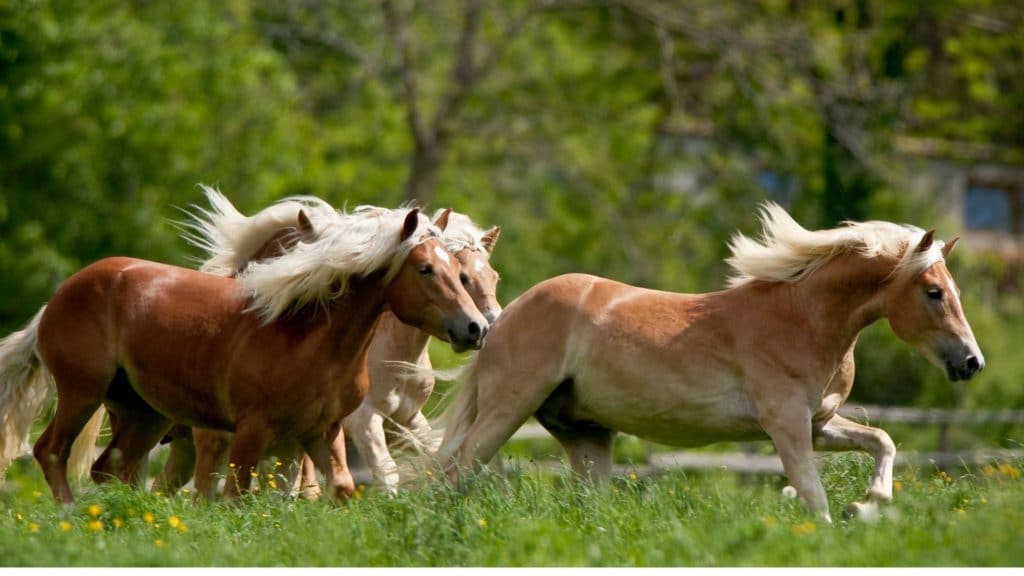
Buying a Haflinger Horse: Your Guide to Purchase
Bringing a Haflinger into your life is an exciting step. This section guides you through what to look for and what to expect when purchasing your new equine partner.
What to Look For When Buying a Haflinger
- Temperament: Prioritize a calm, friendly, and willing disposition, especially for beginners.
- Health: Request complete health records, including up-to-date vaccinations, deworming, and a pre-purchase veterinary examination (PPE).
- Conformation: Ensure their build aligns with breed standards for soundness and performance.
- Pedigree: Verify lineage through official registries like the American Haflinger Registry for purebred status and to understand their background.
Haflinger Price Range & Factors
Haflingers typically range from $2,000 to $10,000, with prices varying based on age, training level, breeding quality (pedigree), and location.
Once you’ve found your ideal Haflinger, you’ll also want to learn about the fun facts and frequently asked questions that make this breed so unique.
Fun Facts & FAQs: Everything About Haflinger Horses
Beyond their practical uses and caring nature, Haflingers boast several unique traits and are often the subject of common inquiries.
Haflinger Fun Facts
- Haflingers are affectionately known as “golden horses” due to their radiant chestnut coats.
- At fairs and shows, Haflingers often participate in single and team hitch competitions, pulling carts competitively—sometimes up against larger draft breeds like Belgians and Percherons.
- Globally popular, they hold a special place in Europe (particularly their native Austria and Germany, where they are incredibly common) and North America.
- A scientific first: In 2003, a Haflinger mare named Prometea became the first successfully cloned horse.
- Historical tenacity: During World War II, Haflingers earned the nickname “mountain tanks” for their incredible strength and surefootedness while carrying supplies through the challenging Alps.
Frequently Asked Questions about Haflinger Horses
Are Haflingers horses or ponies?
Haflingers are technically classified as horses, despite their pony-like height, due to their robust build and distinct horse characteristics.
What does “liz.” mean in a Haflinger’s name?
The “liz.” prefix in a Haflinger stallion’s name signifies that he is a licensed breeding stallion, approved by the American Haflinger Registry for purity and quality.
How long do Haflinger horses live?
Haflingers are known for their exceptional longevity, often living 25–30 years, and sometimes well into their late 30s or even 40s with proper care.
Are Haflingers good for jumping?
While not typically high jumpers, Haflingers are capable and willing over smaller fences, making them suitable for pleasure jumping and lower-level eventing.
What is the Haflinger breed standard?
The breed standard includes a compact, muscular build, chestnut coat with flaxen mane and tail, and a height of 13.2–15 hands. For full details, consult the official American Haflinger Registry
or World Haflinger Federation.
Are Haflingers high-maintenance?
No, Haflingers are considered relatively low-maintenance due to their hardiness and “easy keeper” nature, but they do require consistent diet management.
Are Haflingers good for kids?
Yes, their gentle nature makes them excellent for children.
How much weight can a Haflinger carry?
Haflingers can comfortably carry up to 20% of their body weight, making them suitable for most adult riders.
Are Haflingers hypoallergenic?
No horse is truly hypoallergenic, but Haflingers’ short coats may cause fewer allergic reactions for some people.
Understanding these unique traits and common questions helps in appreciating the Haflinger, but how do they compare to other breeds often recommended for beginners?
Haflinger vs. Other Beginner Horse Breeds: A Comparison
Haflingers are often compared to other breeds recommended for beginners. Here’s how they stack up:
| Breed | Height | Temperament | Best For |
|---|---|---|---|
| Haflinger | 13.2–15 hands | Gentle, willing | All ages, beginners |
| Quarter Horse | 14–16 hands | Calm, versatile | Western disciplines |
| Morgan | 14.1–15.2 hands | Friendly, hardy | All-around riding |
| Welsh Pony | 11–13.2 hands | Spirited, smart | Children, small adults |
Conclusion: Why the Haflinger is Your Ideal First Horse
In summary, Haflinger horses are truly ideal for beginners and families due to their gentle temperament, remarkable versatility, and striking “golden horse” appearance. Whether you seek a reliable trail companion, a willing driving partner, an affectionate therapy horse, or even a living piece of history like the “mountain tanks” of WWII or the first cloned horse, the Haflinger breed is a trustworthy choice that promises years of rewarding partnership.
Ready to find your perfect equine partner? Explore our guides on horse care and training for more tips, share your own Haflinger story in the comments below, or join our newsletter for weekly horse insights and exclusive content! You can also connect with us on Facebook or email me at mileshenry@horseracingsense.com to share your love for horses.
Think you’re ready to own a Haflinger? Take this short quiz to find out if the breed is a perfect fit for you.
Resources and Further Reading
- American Haflinger Registry
- World Haflinger Federation (official)
- Veterinary Guidelines on Equine Metabolic Syndrome (PubMed)
- Equine Laminitis Resources (American Association of Equine Practitioners)
- Veterinary Guide to PSSM (Wichita Equine Vet)
- Related Articles:
This article was written by an experienced horse owner and equine writer, drawing on personal experience and authoritative sources to provide accurate, trustworthy information for horse lovers of all levels.
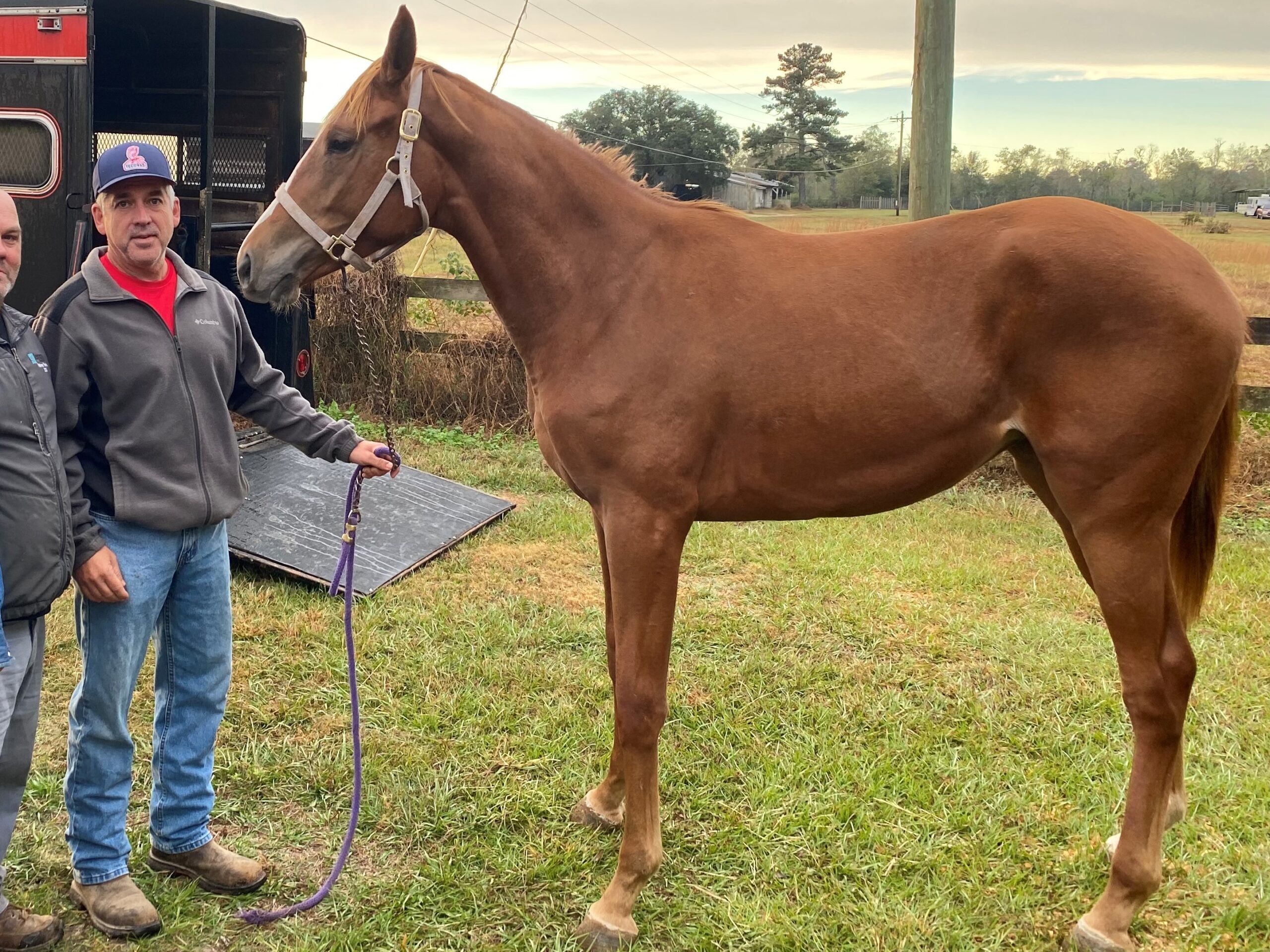
About the Author: Miles Henry
Lifelong Horseman | Racehorse Owner | Published Author
Miles Henry brings over 25 years of hands-on experience training and owning Thoroughbred racehorses. Raised with Quarter Horses and Appaloosas, he’s spent a lifetime learning from horses—on the track, in the barn, and in the field. Today, he runs a small but successful racing stable in Louisiana and shares real-world insights on HorseRacingSense.com, helping horse owners, fans, and bettors navigate the sport with confidence.
📚 Books: View Miles’s books on Amazon »
🎧 Podcast Guest: Animal Tales Ep. 32 |
YouTube Interview
📩 Newsletter: Sign up for racing tips and horse care advice »
🔗 Follow Miles:
Twitter |
Facebook |
YouTube


